Text
Final reflections
After finishing the track I am pleased with how it sounds. It’s not totally exact to the original but achieving that would be a near impossible task. I think However there are elements of Josh Homme's sonic signature that we did manage to capture.
I am happy with the overall guitar tone captured in the track. I think with the use of plugins to emulate the pedals Josh Homme would have used have got us close to his signature guitar tone. I would be interested to see what it would’ve sounded like if we did manage to get an actual wah pedal on it rather than a simulation though. In the future, I will make sure I always pack more equipment just in case the studio doesn't have it.
I think the drums sound good however a bigger room would have sounded better as they sound a little to dry. Ideally when capturing this sort of sound the room is one of the most important elements and a slightly bigger, less acoustically treated room for us would've worked perfectly. Looking back at the screenshots of the studio session and listening to the track it’s fairly apparent that the size of the room that was used in the original tracks was a lot bigger than we had which is partly down to why the production is so good ‘Nothing can make or break the sound of your performance, your rehearsal space, a recording venue or a home entertainment system more than room acoustics.’ (S Feinstein 2016).
Unfortunately, however, we could only work with the resources we had available but this is something to considering for the future. Despite the fact of the room itself I think the process of leaving the room mics in the same place with the same settings worked very well and maybe could have even been louder in the track. This is something I loved the sound of though and would be interested to do this in my future recordings.
I am especially pleased with how the vocals especially considering how last minute they were. The use of limiters worked in our advantage here when adding the slight distortion. I would, however, be interested to see how they would sound if done in the studio with a U87 microphone and will make sure not to leave them so late next time.
I think the best sounding part of the song is the bridge. This, in my opinion, is the closest sounding bit of the track. I think the slide guitar parts here especially sound great and our use of reverb plugins here worked well.
In conclusion, I have learned that the use of the room is vital in Josh Homme’s sonic signature. This is what makes his recordings sound so unique as unless you use the same room as he did it’s hard to emulate exactly how his recordings sound. Despite this, however, I think other things like his use of limiters on vocals and effects on guitar are easier to recreate hence why we have come closer to elements of his sonic signature here. I have learned a lot from studying Homme and will definitely take some of his practices and try and use them in my own work.
References
Feinstein, S. (2019). The Importance of Room Acoustics. [online] Alesis.com. Available at: https://www.alesis.com/kb/article/2228 [Accessed 23 May 2019].
0 notes
Photo
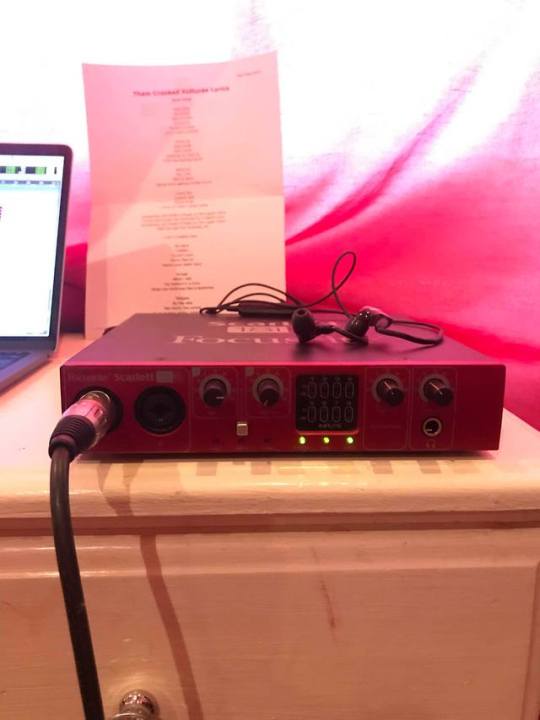
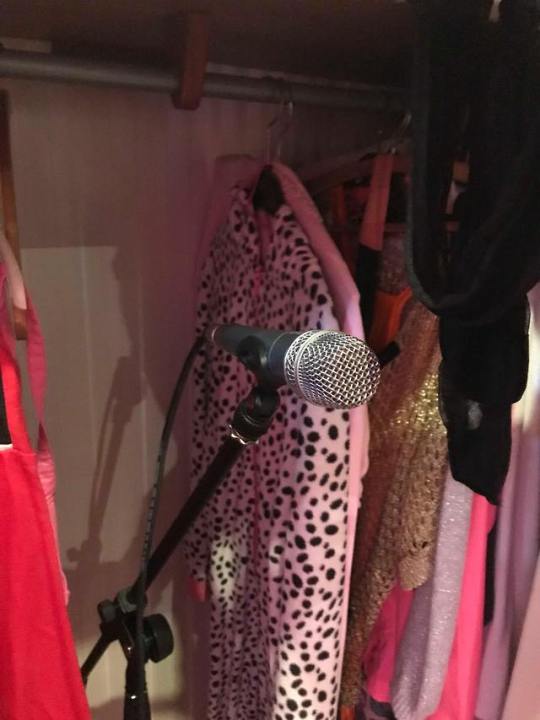


Vocal recording
When it came to recording vocals we, unfortunately, left it pretty late so had to do it round the singer's house
0 notes
Text
Mixing: Lead guitar
Pretty much all the lead tracks in the actual song have a wah pedal used on them.
When recording we did acquire a wah pedal but unfortunately didn’t have the sufficient means of powering it. This meant we had to opt for a wah plugin instead.
This got a pretty similar sound to the solo guitar on the actual track
0 notes
Text
Mixing: Slide guitar
When listening to the original track it was apparent the slide parts where more trebly sounding than what we already had so we first raised the high end on the slide tracks with EQ. We then realized that they needed a bit of reverb as they were a bit dry sounding so we put a reverb plugin on them. We opted for a medium room sound as this is what they would have been in
0 notes
Text
Mixing: Rhythm Guitar
When it came to mixing the rhythm guitar we again solo’d each mic on the amp to see which ones sounded best. We soon decided that we didn’t need the 421 in the mix. We’d tracked two guitars for them rhythm so panned the mics for one guitar track left and the other right. For the track on the right, we only used the right room mic from that recording and for the track on the left, we only used the left room mic.
After this we got a level mix of each mix and then added some high end via a 7 band eq to match the guitars in the track.
After listening to the track a few more times it became apparent that there was a slight fuzz effect on the guitar so we then tried to emulate this by putting a fuzz plugin on the guitar track.
0 notes
Text
Mixing: Bass
When mixing the bass we first listened to each mic individually to see what they sounded like. We then decided to only use two out of the three there. After this, we put compression on the bass tracks to make the playing more consistent and made sure it sat nicely within the track.
0 notes
Text
Mixing: Drums
To start with we got a basic level mix of each mic on the kit. After this it was obvious to us we needed some compression on the Kick and Snare. We did this by first sending the kick tracks to an aux track and then putting compression on that track. This means it can be blended in with a master fader. We then repeated this process with the snare.
After this, we realized that the snare in the original track was a lot weightier sounding than our snare (probably due to the fact it was tuned lower). With this in mind, we eq’d the snare so that the low end was pulled up adding a bit more weight.
We then sent all the drum groups to an aux track and put compression on that track. This is called parallel compression.
0 notes
Text
Bass recording
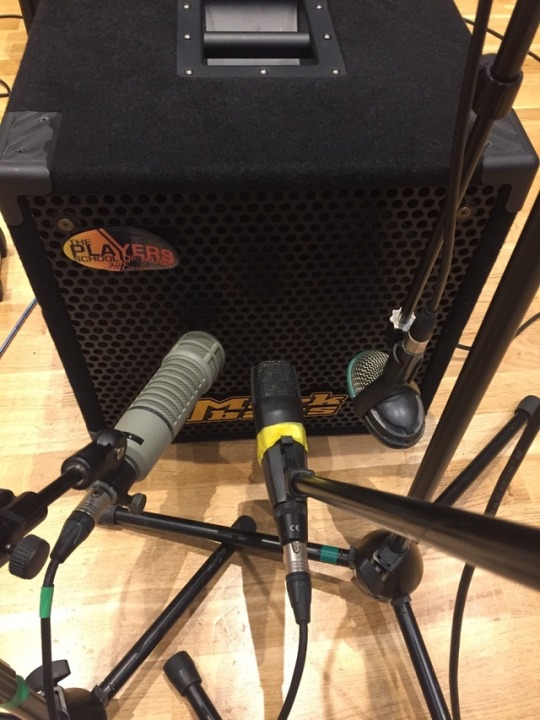
Three mic’s on one amp to see which has the best sound
from left to right: RE 20 broadcast mic, Sennheiser 421, AKG D12

mic distance from the bass amp. All mics fairly close as the bass is one thing that isn’t as ambient sounding
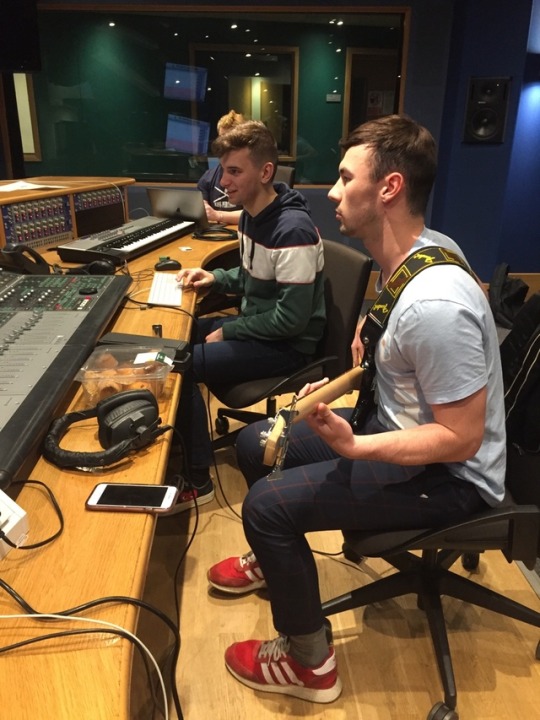
Tavis playing a similar bass to John Paul Jones Manson E-Bass Bass Guitar
0 notes
Text
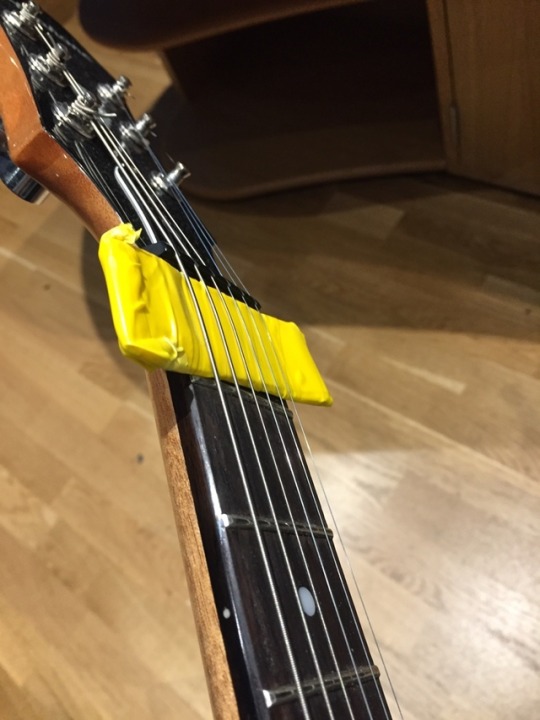
A way of raising the action on the guitar so it’s easier to play slide. A piece of paper wrapped in electrical tape
0 notes
Text
Editing
When recording the song we tried to make sure we captured the best performance from each performer to make the editing process as easy as possible. We also wanted it to match the extremely high standard of the instrumentation in the actual track.
The only bit of editing that needed to be done was to get a drum fill at the very start in time. We did this through quantization and putting each hit where it should be.
0 notes
Text
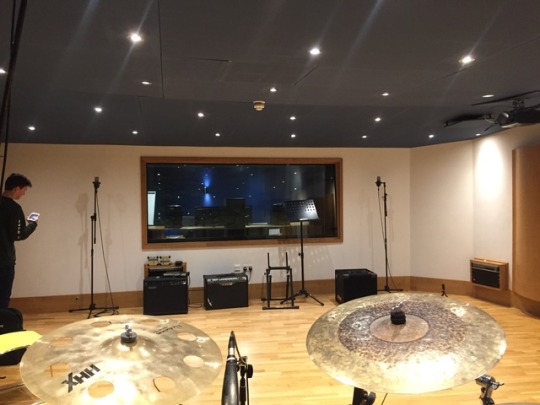
Room mics kept in the same place for every instrument that was track to create the sound of a band playing together
0 notes
Text
Rhythm guitar recording
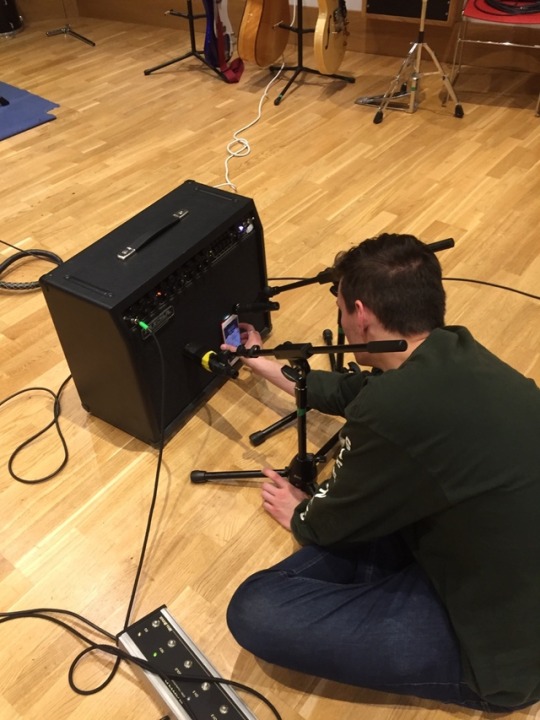
using a phone torch to find where the speaker cone in the amp is. We wanted mics that were off center to the speaker cone to capture a darker sounding tone
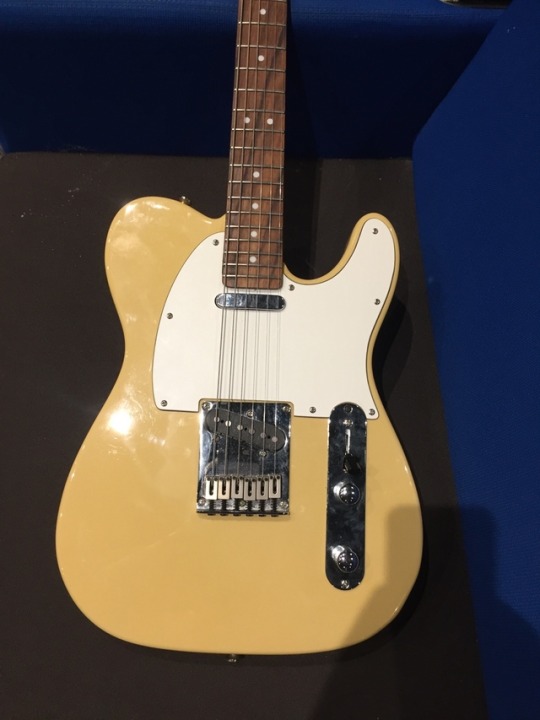
The guitar used to track Rhythm. similar to Josh Homme’ s fender Telecaster.

mic placement on the amp
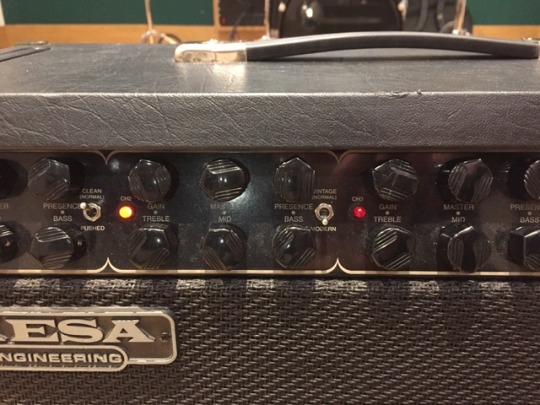
The EQ settings for the rhythm guitar tone
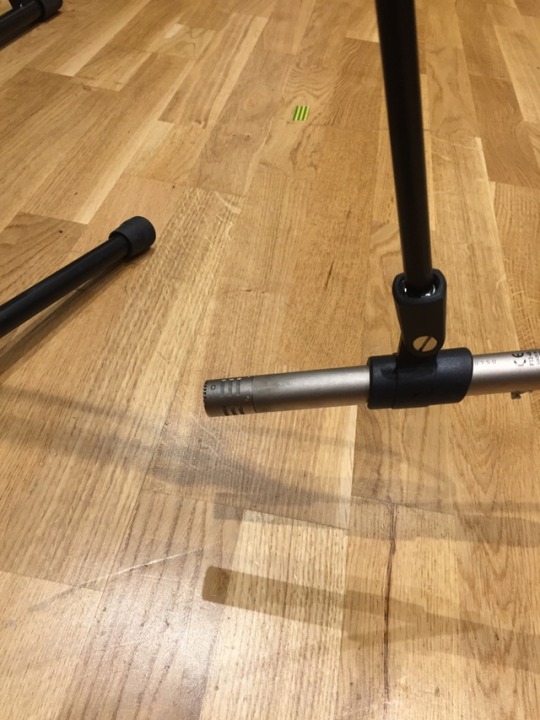
Pointing a pencil condenser mic at the floor to capture the reflections and ultimately the ambient sounding guitar tone
0 notes
Text
Drum recording
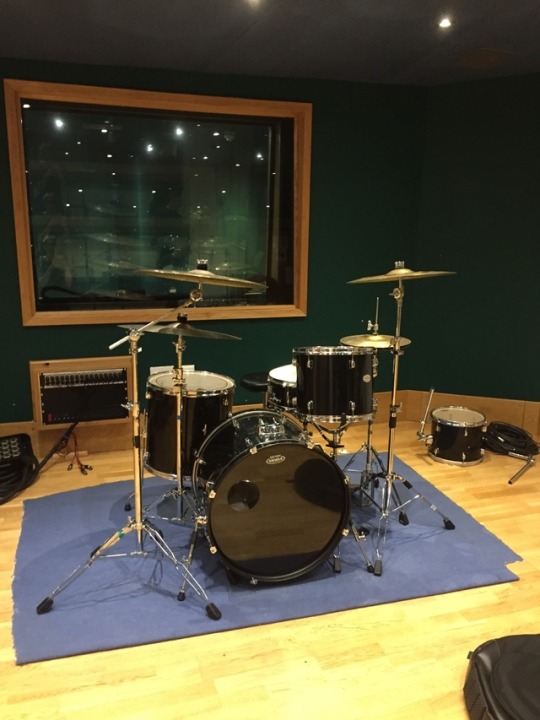
Setting up the kit how to emulate how Dave Grohl has it with the high up cymbals.
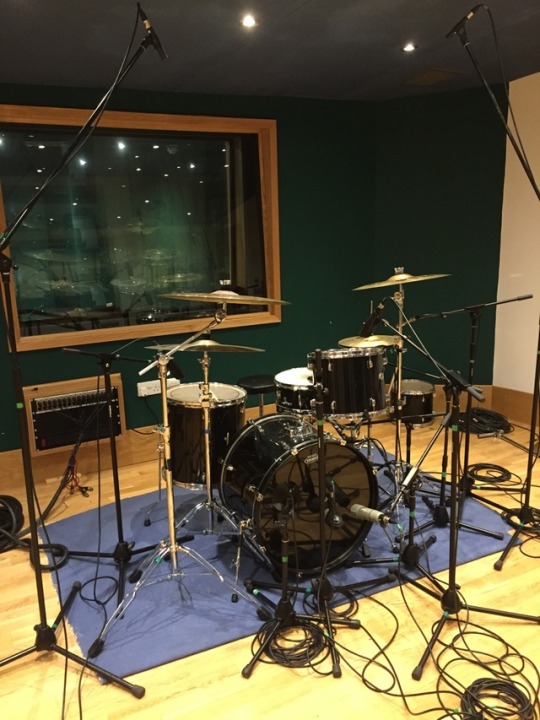
The mic’d up kit
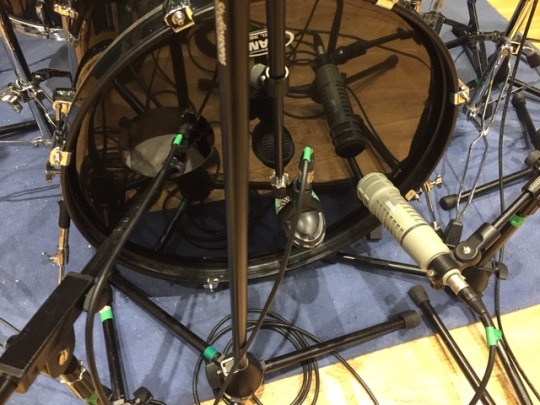
Three mic’s on the kick. We won’t necessarily use them all but it’s better to have them.
Kick in: Sennheiser 421
Kick out: Akg D112 (middle), RE20 Broadcast mic (far right)
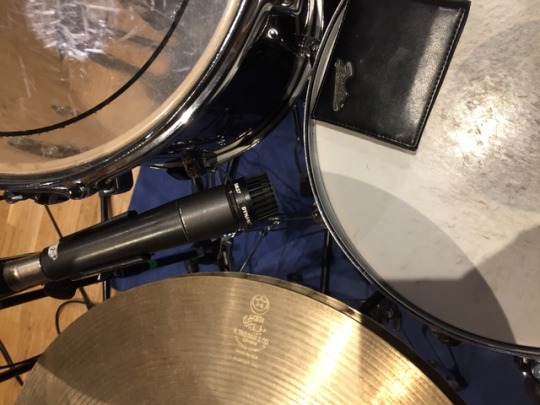
Far back sm57 on the snare to capture more of the reverb of each hit

High up overheads to capture the room sound and dramatic sounding cymbals
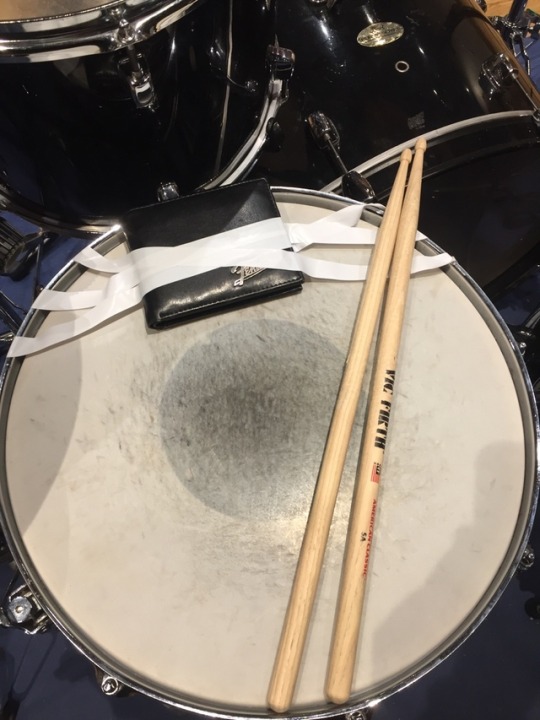
wallet taped onto the snare to take out any ringing sound
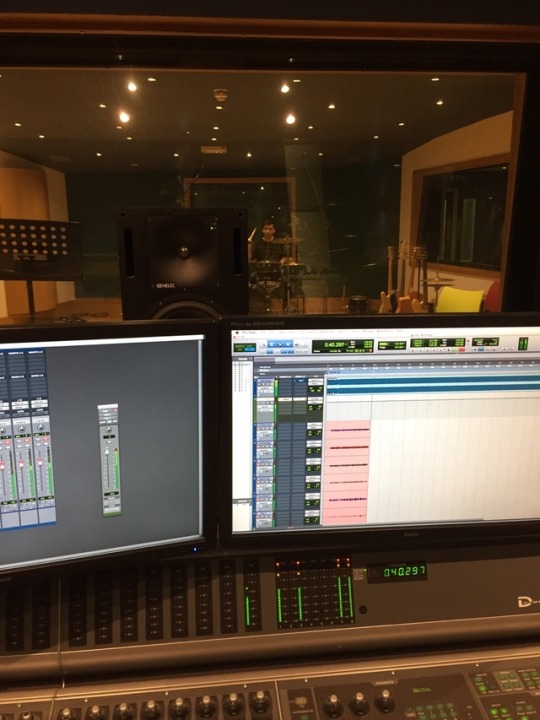
tracking
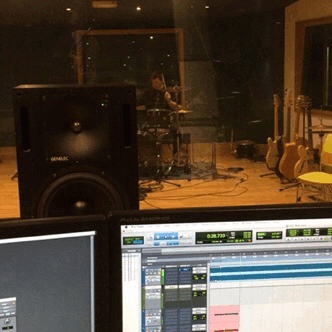
Drum recording
1 note
·
View note
Photo
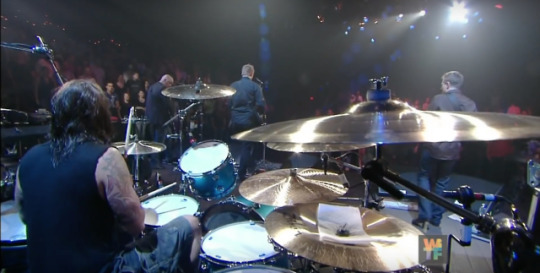
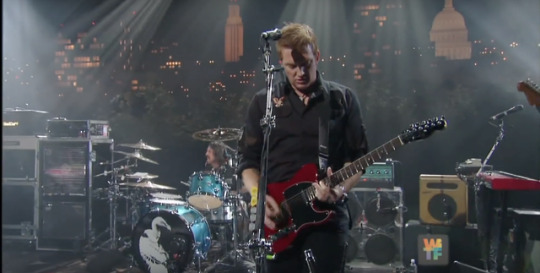
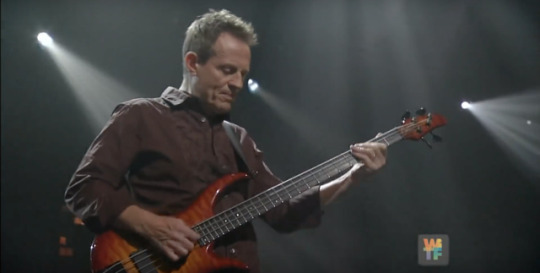
Them Crooked Vultures live
Seeing as we only had limited photos from their studio session we decided to watch some live videos of the band to gauge what gear the band used and how they set it up.
0 notes
Photo
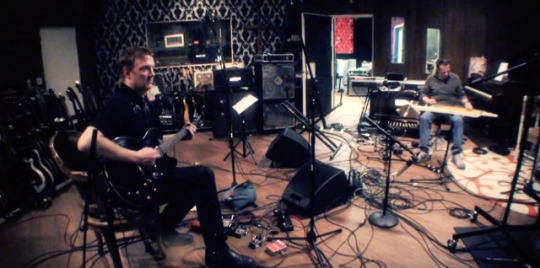
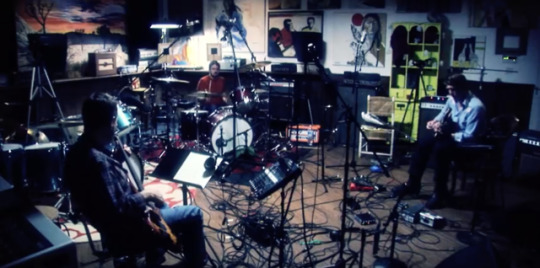

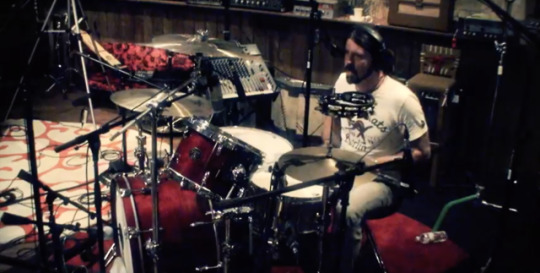
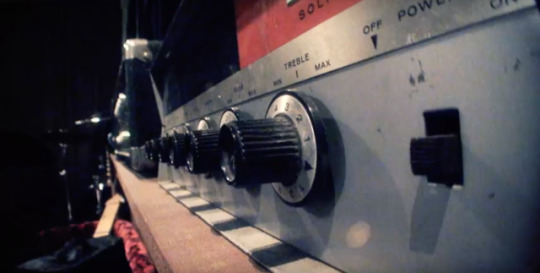
Screenshots from the Them Crooked Vultures recording session.
Unfortunately, there are only limited photos from their studio sessions online
0 notes
Photo

After a lot of thought me and my group have decided to try and emulate the work of producer Josh Homme in the Them Crooked Vultures album and specifically the track New Fang.
We choice this production style as we love its live and roomy sounding production.
0 notes
Text
What is a sonic signature?
A sonic signature is a certain definable element that is present in a producers work. Whether this is Phil Spector's wall of sound or Steve Albini’s unapologetic rawness every producer has their own sound and their own way of doing things. ‘great artists and their music have a sonic signature. Their sound definitely matures and develops over time, but each piece they produce has that certain it about it’ (M Curtis 2016).
References
Curtis, M. (2019). What Is A "Sonic Signature"?. [online] Movement Mastering. Available at: http://movementmastering.com/blog/what-is-a-sonic-signature [Accessed 22 April 2019].
0 notes